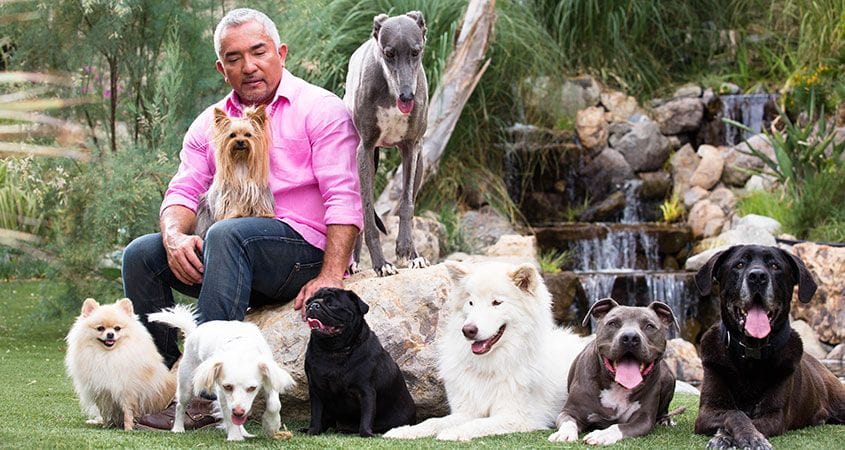This week, let’s play “What if?” There are two dogs that need to be rehabilitated. I want you to pick the difficult case for me to handle, while you take the easy one, okay?
The first dog, Brutus, is a Rottweiler/pit bull mix who weighs 150 pounds. He’s a strong, excitable dog. He isn’t aggressive, but he pulls all over the place on the walk and jumps on people. He’s already knocked over his owner’s brother, causing him to break his arm.
The second dog is Bridget. She’s a Shih Tzu/Pomeranian mix and weighs about 8 pounds. She’s afraid of everything and hides under the bed shaking like a leaf if someone comes in the house. She’s impossible to walk because she panics easily. She’s even skittish around the one human who feeds her.
So which dog do you choose? Brutus or Bridget?
If you answered Bridget, then good luck. If you’d wanted a quick and easy case, then the choice was Brutus. That’s because Brutus’ misbehavior isn’t so much a matter of psychology as it is of energy, and once I work off his excess energy through a long walk — or, in his case, a run — then his mind will go into the state where it will be very easy to teach him to become calm and submissive and stop pulling and jumping.
Brutus is only excitable because his needs for exercise aren’t being met. Because he’s not aggressive, at the most I might also take him out to do some cattle herding to fulfill his breed instincts.
It won’t quite work that way for Bridget because her’s isn’t a problem of energy. It’s a problem of instinct. Somewhere along the way, she learned to associate almost everything with danger and her response is flight — to hide.
You can’t just take a dog like that and cure the problem by confronting it immediately. Doing that would trigger one of two other responses: fight or surrender — and not in the good way. In the former case, Bridget would become aggressive. In the latter, she’d go beyond avoidance to a state of paralyzing terror. I’ve seen dogs lose all control of their bowels in situations like that, often quite forcefully, so it’s not a state you ever want to put a dog into.
In order to rehabilitate a fearful dog, you first need to earn her trust. To do that, you’ve got to give the dog its own space and practice no touch, no talk, no eye contact. I know it can be hard for humans to ignore a dog, but in this case it’s in the dog’s best interest.
It’s also very important that you not feel sorry for the dog or try to give affection when she’s fearful. This will just reinforce the frightened state. Instead, you need to project calm energy while ignoring the dog so that you create a secure atmosphere. The dog’s curiosity will eventually draw her to you when she is feeling secure enough.
Another part of rehabilitating fearful dogs is to let them learn how to enjoy being a dog again — letting them explore around the yard on their own or playing with a favorite toy. And, if the frightened dog can be around others of her kind, don’t forget that dogs are the best tools for this kind of rehabilitation. Try to arrange a playdate with dogs with the same or lower energy level — like you, these dogs should be calm but friendly.
When Bridget does finally start to trust and approach you, don’t invade her space. Let her sniff you or lick your hand. If you do pet her, don’t lean over her and don’t pet her on top of the head or shoulders — she might perceive these as threats and retreat again. Instead, pet her under the chin or on her chest.
Once she’s gotten to the point of trusting you, then it’s time to gradually start exposing her to the things she’s afraid of, like other people. Start out with very short periods, like three to five minutes, then reward her with her favorite thing if she gets through the exposure without panicking. This will slowly teach her to associate formerly scary things with a reward and help diminish her fear.
Building trust with a fearful dog can be a long process and you may experience setbacks. What it requires more than anything else from you, the Pack Leader, is patience.
Stay calm, and rehabilitate that dog!
Did you pick the right dog? Let us know in the comments!











